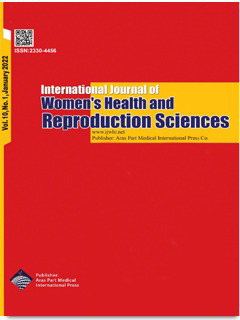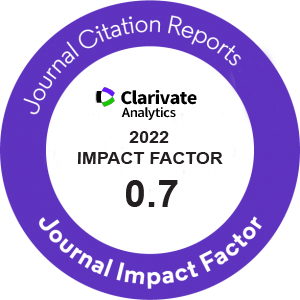| Review | |
| Update on the Global Prevalence of Severe Fear of Childbirth in Low-Risk Pregnant Women: A Systematic Review and Meta-Analysis | |
| Shahrzad Sanjari1, Reza Chaman2, Shahrbanoo Salehin3, Shahrbanoo Goli4, Afsaneh Keramat5 | |
| 1Student Research Committee, School of Nursing and Midwifery, Shahroud University of Medical Sciences, Shahroud, Iran 2Center for Health Related Social and Behavioral Sciences Research, Shahroud University of Medical Sciences, Shahroud, Iran 3Sexual Health and Fertility Research Center, Shahroud University of Medical Sciences, Shahroud, Iran 4Department of Epidemiology, School of Public Health, Shahroud University of Medical Sciences, Shahroud, Iran 5School of Nursing and Midwifery, Shahroud University of Medical Sciences, Shahroud, Iran. |
|
|
IJWHR 2022; 10: 003-010 DOI: 10.15296/ijwhr.2022.02 Viewed : 2378 times Downloaded : 4752 times. Keywords : Fear of childbirth, Pregnancy, Prevalence, Meta-analysis |
|
| Full Text(PDF) | Related Articles | |
| Abstract | |
Objectives: Severe fear of childbirth (FOC) has adverse consequences for mother and child. This study aimed to update the global prevalence of severe FOC in low-risk pregnant women. Materials and Methods: Observational studies published in English were obtained through PubMed, Scopus, Science Direct, Wiley Online, and Google Scholar databases up to April 2020. After reviewing the title and introduction, the quality of the articles that had full text and met the inclusion criteria of the study was checked with the JBI checklist. Then, the final extracted data were entered into the STATA software. The overall prevalence of severe FOC and fear in subgroups were obtained using meta-analysis. Tests of publication bias and sensitivity analysis were also performed. Results: Overall, 27 observational studies were included (26014 participants). The global prevalence of severe FOC was 16% (95% CI: 14%–19%). The subgroup analysis showed that after 2015, the prevalence of fear was higher than before (%18 versus %14). The results also showed a higher prevalence of fear in women with a diploma and lower compared to women with a university education (%19 versus %13), in single/divorced women compared to married/cohabitation women (%21 versus %15), in nulliparous women compared to multiparous women (%17 versus %14) and in women experiencing the second trimester of pregnancy compared to women in the third trimester of pregnancy (%23 versus %14). Conclusions: The global prevalence of severe FOC was 16%. Diagnostic, preventive, therapeutic and follow-up strategies are needed to reduce fear in all countries. |
Cite By, Google Scholar
Google Scholar
PubMed
Online Submission System
 IJWHR ENDNOTE ® Style
IJWHR ENDNOTE ® Style
 Tutorials
Tutorials
 Publication Charge
Women's Reproductive Health Research Center
About Journal
Publication Charge
Women's Reproductive Health Research Center
About Journal
Aras Part Medical International Press Editor-in-Chief
Arash Khaki
Mertihan Kurdoglu Deputy Editor
Zafer Akan























